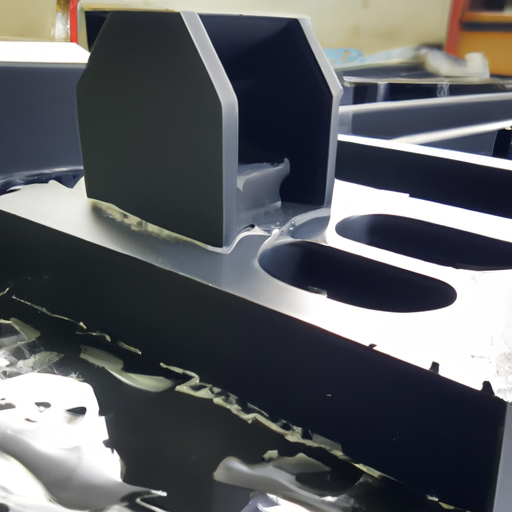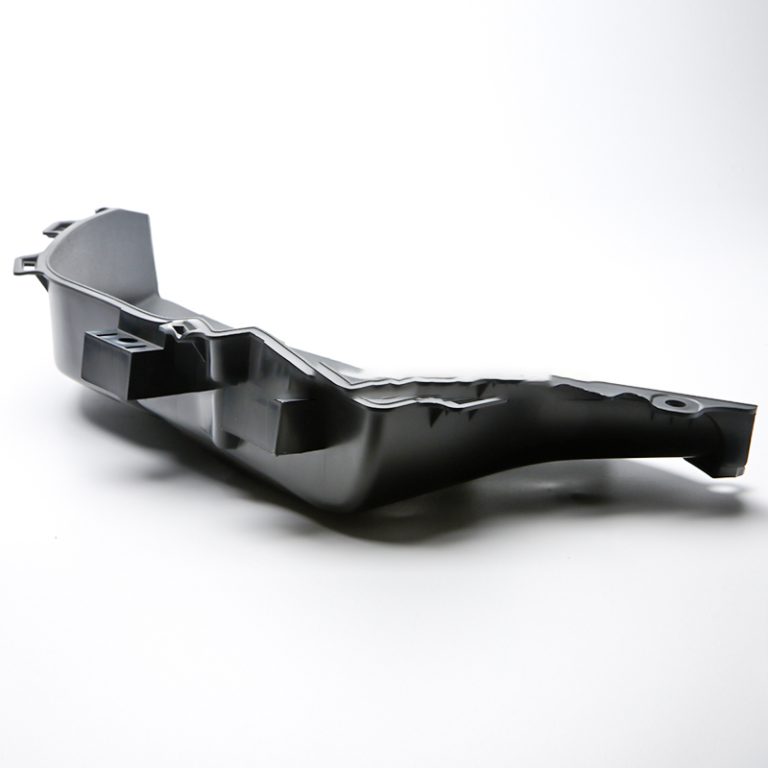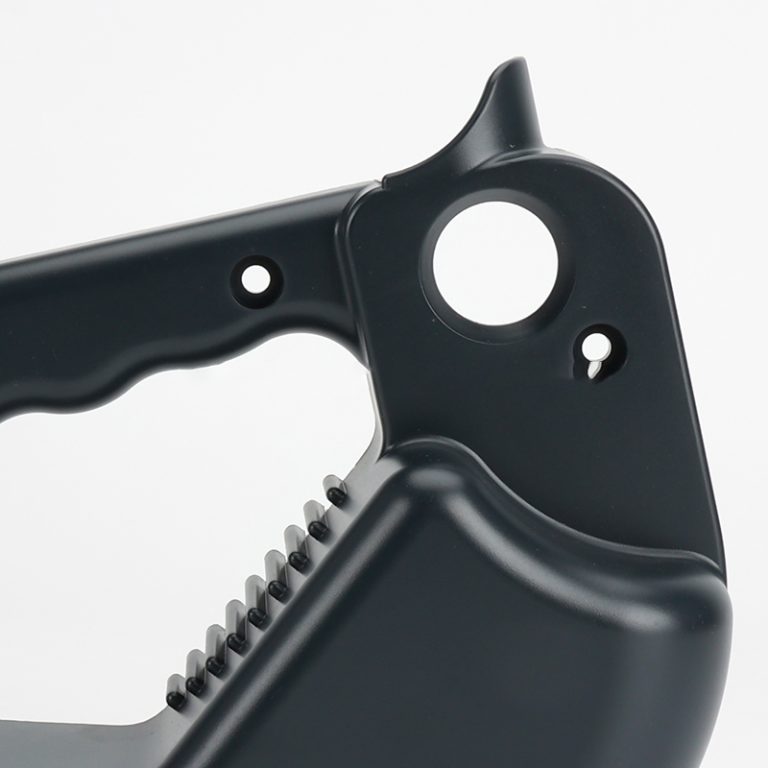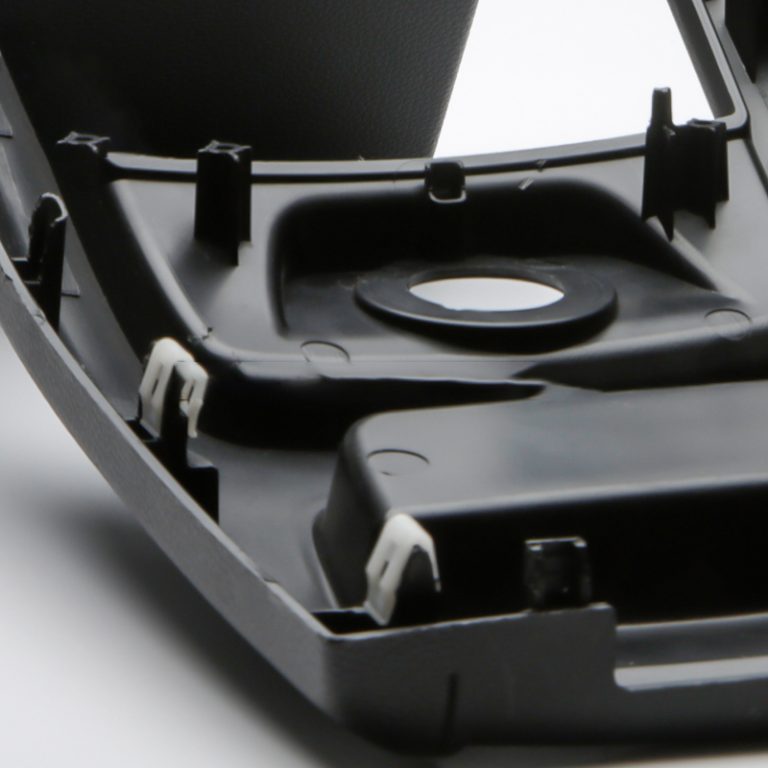أساسيات صب قالب حقن البلاستيك

إن قالب حقن البلاستيك هو عملية تصنيع مستخدمة على نطاق واسع حيث يتم حقن البلاستيك المنصهر في تجويف القالب لإنشاء الشكل المطلوب. تُستخدم هذه العملية بشكل شائع في إنتاج المنتجات البلاستيكية المختلفة، بدءًا من المكونات الصغيرة إلى الأجزاء الصناعية الكبيرة. يعد فهم أساسيات صب قوالب البلاستيك بالحقن أمرًا ضروريًا لأي شخص مشارك في الصناعة التحويلية.
| اختيار المواد | الحجم |
| ABS/PET/نظرة خاطفة/إلخ. | التخصيص |
تتكون آلة التشكيل بالحقن من برميل ومسمار ووحدة تثبيت القالب. يتم إدخال المادة البلاستيكية في البرميل، حيث يتم تسخينها وخلطها بواسطة المسمار الدوار. يتم بعد ذلك حقن البلاستيك المنصهر في تجويف القالب تحت ضغط عالٍ، مما يملأ التجويف بأكمله ويأخذ شكل القالب. يتم تثبيت القالب مغلقًا بواسطة وحدة التثبيت لضمان عدم تسرب المواد البلاستيكية أثناء عملية الحقن.
بمجرد ملء تجويف القالب، يُسمح للمادة البلاستيكية بالتبريد والتصلب داخل القالب. يُعرف هذا بمرحلة التبريد ويستغرق عادةً من بضع ثوانٍ إلى بضع دقائق، اعتمادًا على حجم المنتج وتعقيده. يعد التبريد خطوة حاسمة في العملية، لأنه يحدد الشكل النهائي وجودة الجزء المصبوب. يضمن التبريد المناسب عدم اعوجاج الجزء أو تشوهه وحصوله على دقة الأبعاد المطلوبة.
بعد مرحلة التبريد، يتم فتح القالب، ويتم إخراج الجزء المصبوب من تجويف القالب. ويتم ذلك إما يدويًا أو باستخدام نظام طرد آلي، اعتمادًا على حجم الجزء وتعقيده. يتم بعد ذلك إغلاق القالب مرة أخرى، ويتم تكرار العملية لإنتاج المزيد من الأجزاء.
يوفر قالب حقن البلاستيك العديد من المزايا مقارنة بعمليات التصنيع الأخرى. يسمح بإنتاج أشكال معقدة بدقة عالية وقابلية للتكرار. كما أنه يتيح استخدام مجموعة واسعة من المواد البلاستيكية، مما يمنح الشركات المصنعة المرونة لاختيار المادة الأكثر ملاءمة لتطبيقها المحدد. بالإضافة إلى ذلك، فإن القولبة بالحقن هي عملية عالية الكفاءة، مع الحد الأدنى من هدر المواد ودورات الإنتاج السريعة.
في الختام، تعد عملية قولبة القالب البلاستيكي بالحقن عملية أساسية في الصناعة التحويلية. أنها تنطوي على تصميم وإنشاء قالب، وإعداد المواد البلاستيكية، وحقن البلاستيك المنصهر في تجويف القالب. مرحلتي التبريد والإخراج تكمل العملية، مما يؤدي إلى الجزء المصبوب النهائي. يعد فهم أساسيات صب قوالب البلاستيك بالحقن أمرًا بالغ الأهمية لأي شخص مشارك في إنتاج المنتجات البلاستيكية، حيث يسمح بتصنيع فعال وعالي الجودة.

The injection molding machine consists of a barrel, a screw, and a mold clamping unit. The plastic material is fed into the barrel, where it is heated and mixed by the rotating screw. The molten plastic is then injected into the mold cavity under high pressure, filling up the entire cavity and taking the shape of the mold. The mold is held closed by the clamping unit to ensure that the plastic material does not leak out during the injection process.
Once the mold cavity is filled, the plastic material is allowed to cool and solidify inside the mold. This is known as the cooling phase and typically takes a few seconds to a few minutes, depending on the size and complexity of the product. Cooling is a critical step in the process, as it determines the final shape and quality of the molded part. Proper cooling ensures that the part does not warp or deform and that it has the desired dimensional accuracy.
After the cooling phase, the mold is opened, and the molded part is ejected from the mold cavity. This is done either manually or using an automated ejection system, depending on the size and complexity of the part. The mold is then closed again, and the process is repeated to produce more parts.
Molding injection plastic mold offers several advantages over other manufacturing processes. It allows for the production of complex shapes with high precision and repeatability. It also enables the use of a wide range of plastic materials, giving manufacturers the flexibility to choose the most suitable material for their specific application. Additionally, injection molding is a highly efficient process, with minimal material waste and fast production cycles.
In conclusion, molding injection plastic mold is a fundamental process in the manufacturing industry. It involves the design and creation of a mold, the preparation of the plastic material, and the injection of the molten plastic into the mold cavity. The cooling and ejection phases complete the process, resulting in a finished molded part. Understanding the basics of molding injection plastic mold is crucial for anyone involved in the production of plastic products, as it allows for efficient and high-quality manufacturing.






